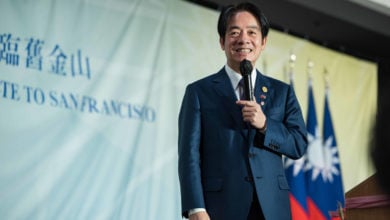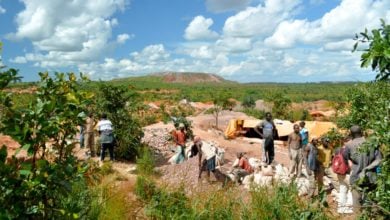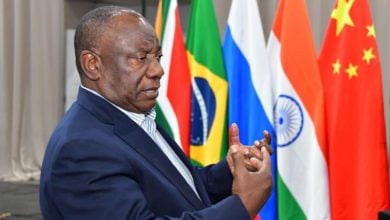October 17, 2012
Recently in East Asia, political tension regarding the territorial sovereignty over Dokto Island (Takeshima in Japanese) and also the Diaoyu Islands (Senkaku Islands in Japanese) has grown. The former has been claimed by both governments of South Korea and Japan, while the latter has been claimed by China and Japan.
Especially in mainland China, massive “anti-Japan demonstrations” have risen in many cities in response to Japan’s announcement of the nationalization of the disputed Diaoyu Islands. Japanese-owned shopping malls were attacked in these demonstrations and even some worker’s strikes were held in some Japanese-owned factories to denounce the Japanese government’s act and also to demand improvement of working condition.
The Japanese government and mainstream media have repeatedly claimed that both Dokto Island and the Diaoyu Islands are the “inherent territory of Japan,” rejecting one-sidedly the argument from South Korea and China. They have encouraged ultra-rightwing and racist forces in Japan, and even caused attacks against the South Korean consulate and the Chinese consulate in Japan.
How should Japanese communists and working people behave in this situation?
Historical fact
What we should point out first is the fact that both Dokto Island and the Diaoyu Islands are NOT the “inherent territory” of Japan.
Prior to the Meiji Restoration in 1868, which was a political revolution that paved the way for the establishment of Japanese capitalism, Japan did not recognize both islands as part of its own territory. In spite of intentional disregard by the Japanese government and media, history shows that Japan unilaterally seized Dokto Island from Korea and the Diaoyu Islands from China in the process of its imperialist expansion that led Japan into both World Wars for division and re-division of colonies.
Immediately following the Meiji Restoration, Japan rapidly came into the way of imperialism and expanded its colonies. Japan colonized Taiwan after its victory in the Sino-Japanese war in 1895, concluded the Anglo-Japanese alliance in 1902 and plunged into the Russo-Japanese war in 1904 in order to gain dominion over the Korean Peninsula. During the same period, the U.S. took over the Philippines, Guam and Puerto Rico as its colonies through the Spanish-American war and established dominion over Cuba as a protectorate.
In 1905, Japan and the U.S. signed the Taft-Katsura Agreement. In this agreement, both imperialist countries secretly acknowledged Japan’s domination over Korea and the United States’ domination over the Philippines. With an imperialist military alliance with the U.K. and secret agreement with the U.S., Japan had further expanded its invasion in Asia.
Japan forced the then Korean Empire to disband its army and also deprived it of diplomatic rights in 1905. Then, it annexed Korea and deprived it of national sovereignty in 1910. It meant the start of 36 years of Japan’s colonization of the Korean Peninsula. At the same time, Japan also started its invasive movement in mainland China leading to the waging of all-out invasive war in the 1930s. Furthermore, Japan expanded the hand of invasion to Southeast Asia in early 1940s.
The seizing of the Diaoyu Islands and Dokto Island by Japanese imperialism was a part of the above-mentioned history of Japan’s invasive war and colonization in Asia. Regarding the Diaoyu Islands, Japan secretly decided they were a Japanese possession in a cabinet meeting (without announcement) in January 1895 in the midst of the Sino-Japanese war and then actually seized them from China after victory of the war. Regarding Dokto Island, in the same way, Japan decided to incorporate the island into its territory in a cabinet meeting in January 1905 in the midst of the Russo-Japanese war and named the island “Takeshima.”
The Japanese government, however, has neglected to engage in sincere reflection on its past invasive wars and colonization of Asian countries, and has intentionally separated the seizing of Dokto Island and Diaoyu Islands from the whole process of the history of its invasion. The government has claimed that Japan’s possession of both islands is occupation of terra nullius (land belonging to no one) and has legal effect under international lows. But as world history shows, the logic of the “occupation of terra nullius” itself is nothing but the logic of imperialist robbery. The Japanese government’s claim has no legitimacy at all.
Japan’s aim and U.S. intervention
Hiding historical fact, the Japanese government has claimed its territorial sovereignty over Dokto Island and the Diaoyu Islands. The present Noda administration claims that “there is no territorial issue’” on the Diaoyu Islands that are under Japan’s effective control, while it denounces South Korea’s effective control over Dokto Island as an “illegal occupation.” Such an attitude of the Japanese government is based on imperialist territorial expansionism.
Why does the Noda administration claim the territorial sovereignty of both islands in a loud voice , denouncing China and South Korea?
The Noda administration is facing a serious decline in approval ratings because of its anti-people policies such as the continued use of nuclear power energy, the reinforcement of U.S. bases in Japan and decision to increase the consumption tax etc. In this situation, the Noda administration intends to deflect the anger and discontent of workers and people, and oppress the growing people’s movement against U.S. bases and nuclear power plants by means of chauvinistic propaganda on “territorial disputes.”
The Japanese government has justified the establishment of its invasive military posture, the consolidation of the U.S.-Japan military alliance and the reinforcement of U.S. bases in Okinawa and “mainland” Japan, emphasizing the ‘”threat of China.” Against the backdrop of economic interest in Asia, in recent years the Japanese government changed its “Defense Only” policy and has pursued a more proactive or invasive defense policy based on the concept of so-called “Dynamic Defense.”
Under this line, Japan has planned to reinforce the deployment of the Self Defense Forces (Japanese army) in Okinawa. It has also supported the consolidation of U.S. bases in Okinawa and other areas, including building a new base in Okinawa, and the deployment of the newest U.S. transport aircraft Osprey also in Okinawa, disregarding mass opposition. All these maneuvers target China. The “territorial dispute’ has been used to justify all these maneuvers against China as well the oppression against the anti-U.S. base movement in Okinawa and “mainland” Japan.
At the same time, we strongly denounce the U.S. intervention in territorial disputes in East Asia, especially the dispute over the Diaoyu Islands between China and Japan. It was the Heritage Foundation that provided the venue for ultra-rightwing Tokyo governor Ishihara’s speech on the “metropolitan government’s plan to purchase the Senkaku Islands’” from a private owner, which was proposed in April 2012 in the U.S. and led to the latest dispute with China. Furthermore, the U.S. government and military officials have repeatedly said that “the Senkaku Islands are covered under the U.S.-Japan Security Treaty.” It is a threat against China and a declaration that the U.S. is preparing a military intervention on the territorial dispute regarding the Diaoyu Islands or an invasive war against China under a U.S.-Japan military alliance. In this context, the U.S. and Japan will hold a joint drill “to retake remote islands” on in November 2012. These maneuvers coincide with the United States’ “rebalancing” strategy that the Obama administration announced in January 2012 in order to consolidate the U.S military posture in the Asia-Pacific for confrontation with China and DPRK.
The task of Japanese communists and working people
The raging response of workers and people in China and South Korea regarding these territorial disputes with Japan has a valid historical basis. It is also an expression of opposition and criticism against Japan’s recent building-up of an invasive military posture. In this situation, what stance should Japanese communists and working people take regarding the territorial disputes over Dokto Island and the Diaoyu Islands?
Our answer is as follows.
FIRST is to demand that the Japanese government should withdraw the claim of territorial sovereignty over Dokto Island and the Diaoyu Islands, criticizing the government’s fictional logic of the ‘”inherent territory” and exposing the historical fact of Japan’s seizing of both islands.
SECOND is to fight for the realization of the government’s sincere apology and compensation for victims of Japan’s past invasive wars and colonization in Asia.
THIRD is to oppose Japan’s recent building-up of an invasive military posture and the consolidation of the U.S.-Japan military alliance.
FOURTH is to struggle against chauvinistic and racist forces, and release Japanese workers and people from their influence.
Implementing this line may be difficult because Japanese imperialism has thoroughly promoted the campaign that Dokto Island and the Diaoyu Islands are “inherent territory” of Japan through the education system; all corporate media coincide with the government’s chauvinistic propaganda. But only through the raising of these demands can Japanese workers and people build a relationship of genuine solidarity with workers and people in China and the Korean Peninsula. Urgently raising demands based on proletarian internationalism regarding the present “territorial disputes” in East Asia is required for communists and working people in Japan, an imperialist country. At the same time, to raise these demands in the present situation in Japan is in keeping with Lenin’s revolutionary and internationalist spirit, as expressed in his attitudes on “the national and the colonial question” and “Revolutionary Defeatism” as he faced the First World War.





